 Last week’s economic reporting included readings on new and pending home sales, minutes from the Federal Reserve’s recent Federal Open Market Committee meeting, and data on inflation. Weekly readings on mortgage rates and jobless claims were also released.
Last week’s economic reporting included readings on new and pending home sales, minutes from the Federal Reserve’s recent Federal Open Market Committee meeting, and data on inflation. Weekly readings on mortgage rates and jobless claims were also released.
New and Pending Home Sales Fall
The annual pace of new home sales fell in April according to the Commerce Department. Year-over-year sales of new homes fell to a pace of 591,000 sales as compared to the March reading of 709,000 sales of new homes. Analysts expected a year-over-year pace of 750,000 new home sales in April. Rising home prices and mortgage rates challenged first-time and moderate-income home buyers, which caused falling sales.
Readings for pending home sales fell by -3.90 percent in April; analysts expected a reading of -2.00 percent based on the March reading of -1.60 percent. High home prices and recently rising mortgage rates cooled prospective buyers’ interest as concerns over rising inflation and economic conditions sidelined low and moderate-income home buyers. Lawrence Yun, the chief economist for the National Association of Realtors®, said that rising mortgage rates have increased monthly mortgage payments by as much as $500. A secondary effect of fewer home sales is fewer sales of goods and services associated with home ownership.
The Federal Reserve’s Federal Open Market Committee minutes documented the Fed’s decision to raise its key interest rate range to 0.75 to 1.00 percent. FOMC members expect ongoing rate range increases as the Fed continues its efforts to control inflation.
Mortgage Rates, New Jobless Claims Fall
Freddie Mac reported lower average mortgage rates for the second consecutive week. Rates for 30year fixed rate mortgages fell by 15 basis points to 5.10 percent and rates for 15-year fixed rate mortgages fell by 12 basis points to 4.31 percent. The average rate for 5/1 adjustable rate mortgages rose by 12 basis points to 4.20 percent. Discount points averaged 0.90 percent for 30-year fixed-rate mortgages and 0.80 percent for 15-year fixed-rate mortgages. Discount points for 5/1 adjustable rate mortgage rates averaged 0.30 percent.
New jobless claims fell to 210,000 claims filed from the prior week’s reading of 218,000 initial claims filed. Analysts expected 215,000 new jobless claims. Continuing jobless claims rose to 1.35 million ongoing claims filed as compared to 1.32 million ongoing claims filed.
The University of Michigan’s Consumer Sentiment Index fell to an index reading of 58.40 in May as compared to April’s reading of 59.10. Readings over 50 are considered positive.
What’s Ahead
This week’s scheduled economic reports include readings on home prices and construction spending along with labor sector readings on job growth and the national unemployment rate.

 Are you applying for a mortgage on your home? Keep in mind that a mortgage is a major financial decision and choosing one will have a significant impact on the rest of your life.
Are you applying for a mortgage on your home? Keep in mind that a mortgage is a major financial decision and choosing one will have a significant impact on the rest of your life. Refinancing a home loan can provide numerous benefits, but it can also seem daunting and intimidating to some. Many homeowners would love to lower their interest rate or take advantage of other benefits associated with refinancing, but they are concerned about the time and expense associated with refinancing their current mortgage. The FHA Streamline Refinance loan program is designed to provide those who currently have an FHA loan with an easier way to refinance their mortgage, and this may be a desirable option for many.
Refinancing a home loan can provide numerous benefits, but it can also seem daunting and intimidating to some. Many homeowners would love to lower their interest rate or take advantage of other benefits associated with refinancing, but they are concerned about the time and expense associated with refinancing their current mortgage. The FHA Streamline Refinance loan program is designed to provide those who currently have an FHA loan with an easier way to refinance their mortgage, and this may be a desirable option for many. One of the most significant challenges that many people face when preparing to buy a first home relates to saving money for a down payment. While there are many different loan programs with varying down payment requirements, the fact is that it can still be difficult to save up a large sum of money. Some programs may require you to save as much as 10 percent or 20 percent of the sales price of the home.
One of the most significant challenges that many people face when preparing to buy a first home relates to saving money for a down payment. While there are many different loan programs with varying down payment requirements, the fact is that it can still be difficult to save up a large sum of money. Some programs may require you to save as much as 10 percent or 20 percent of the sales price of the home. With many people spending more time at home, lots of homeowners are taking advantage of the opportunity to improve their houses. If you are thinking about making an upgrade to your house, you probably have a budget you would like to stick to. On the other hand, there are several home renovations you should splurge on if you want to maximize the return on your investment.
With many people spending more time at home, lots of homeowners are taking advantage of the opportunity to improve their houses. If you are thinking about making an upgrade to your house, you probably have a budget you would like to stick to. On the other hand, there are several home renovations you should splurge on if you want to maximize the return on your investment. Putting down the largest sum of money at your disposal might seem like the best way to go when it comes to your mortgage down payment. There is a certain amount of truth to this, but the reality is bigger is not always better.
Putting down the largest sum of money at your disposal might seem like the best way to go when it comes to your mortgage down payment. There is a certain amount of truth to this, but the reality is bigger is not always better. Technology has come a long way, and you might be thinking about turning your house into a smart home. Now, there are a lot of smart home products available, and you may have a difficult time keeping track of which ones are best for you. What are some of the top smart home products you need to know about?
Technology has come a long way, and you might be thinking about turning your house into a smart home. Now, there are a lot of smart home products available, and you may have a difficult time keeping track of which ones are best for you. What are some of the top smart home products you need to know about? Investing in a home may be one of the most significant purchases you’ll make in your lifetime, but many people forget that there are a number of other costs associated with buying a home. If you’re considering a reverse mortgage and want to be clear on all of the fees involved, here are a few things you can expect to come across.
Investing in a home may be one of the most significant purchases you’ll make in your lifetime, but many people forget that there are a number of other costs associated with buying a home. If you’re considering a reverse mortgage and want to be clear on all of the fees involved, here are a few things you can expect to come across.

